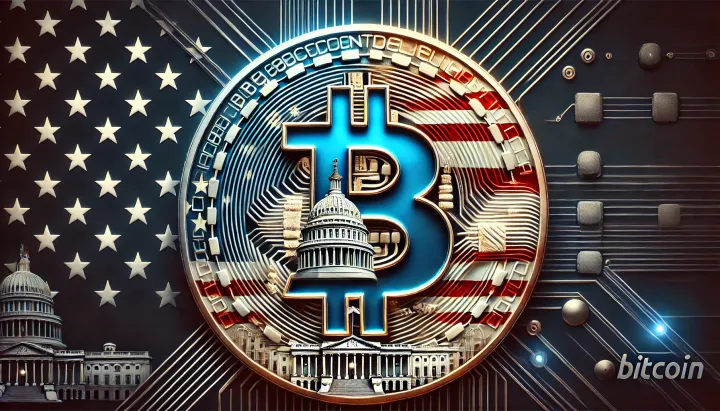State Momentum and the Countdown to Federal Bitcoin Policy
The April 17, 2025 ATX DAO episode features Tom McCarthy explaining how Satoshi Action Fund has turned grassroots pressure into six pro‑Bitcoin state laws while lobbying for federal market‑structure and stablecoin bills before the August 2025 deadline.

- My 'briefing notes' summarize the content of podcast episodes; they do not reflect my own views.
- They contain (1) a summary of podcast content, (2) potential information gaps, and (3) some speculative views on wider Bitcoin implications.
- Pay attention to broadcast dates (I often summarize older episodes)
- Some episodes I summarize may be sponsored: don't trust, verify, if the information you are looking for is to be used for decision-making.
Summary
The April 17, 2025 ATX DAO episode features Tom McCarthy explaining how Satoshi Action Fund has turned grassroots pressure into six pro‑Bitcoin state laws while lobbying for federal market‑structure and stablecoin bills before the August 2025 deadline. He argues that precise statutory definitions and constituent engagement now decide whether the U.S. leads or lags in Bitcoin and crypto innovation.
Take-Home Messages
- Definitions Drive Clarity: Adopt model legislation language now to avoid decades of costly litigation.
- Constituent Calls Win Votes: Mass emails and phone campaigns routinely reverse committee positions.
- August 2025 Deadline: Market‑structure and stablecoin bills must pass before election calculus freezes Congress.
- Builder‑Policy Bridge: Events like Crypto Capital showcase tangible products, reframing Bitcoin and blockchain as jobs, not jargon.
- Strategic Bitcoin Reserves: Early‑adopter states may gain fiscal hedges and pressure federal leaders to act.
Overview
Tom McCarthy traces Satoshi Action’s “model bill” strategy, noting that right‑to‑mine and self‑custody statutes now protect Bitcoin activity in six states, proving bipartisan appeal when economic development is foregrounded. He attributes progress to relentless education; policymakers who once labeled transactions “anonymous” now grasp Bitcoin auditability after targeted briefings. State successes, however, expose a growing compliance patchwork that complicates interstate operations.
Turning to Washington, McCarthy says digital‑asset firms became 2024’s top campaign donors, buying visibility but not guaranteed support. Lawmakers still float mandates such as forcing Bitcoin to proof‑of‑stake, revealing stubborn technical gaps. He insists precise definitions in any federal law will determine whether innovation remains domestic.
Two bills dominate the 2025 agenda: a market‑structure act dividing SEC and CFTC oversight, and a stablecoin framework legitimizing interest‑bearing tokens backed by Treasuries. McCarthy warns that if these do not clear Congress before the August recess, electoral politics could postpone action until 2028. Builders should brief congressional staff—the real advisors—rather than chase headline meetings with principals.
Beyond Capitol Hill, DC DAO’s “Crypto Capital” conference cultivates a hoodie‑friendly builder scene inside policy‑centric DC. McCarthy argues visible product demos, combined with data on 50 million U.S. digital‑asset holders, convert abstract tech into constituent interests legislators respect. The advocacy playbook now blends grassroots emails, live events, and strategic campaign donations.
Stakeholder Perspectives
- State Treasurers: Eye Bitcoin reserves as diversification and political differentiator.
- Federal Agencies: Seek clear lanes to avoid turf battles and enforcement misfires.
- Entrepreneurs: Need certainty that non‑custodial code will not be treated as a money‑service business.
- Institutional Investors: Await regulatory green lights before allocating to tokenized treasuries and mining ventures.
- Grassroots Voters: Demand financial freedom tools and rally quickly against over‑reach.
Implications and Future Outlook
Precise federal definitions would unlock interstate scalability, reduce legal overhead, and attract institutional capital; failure keeps the U.S. in a defensive posture as other jurisdictions court Bitcoin and Web3 builders. States will keep experimenting, but uneven rules raise compliance costs and dilute network effects. Coordinated model language offers a pragmatic bridge.
If stablecoin legislation authorizes interest‑bearing tokens, demand for U.S. debt could climb while reinforcing dollar dominance in global settlements. Conversely, continued ambiguity accelerates CBDC alternatives abroad. Treasury, Fed, and Congress therefore share an incentive to act quickly.
Strategic Bitcoin reserves, though nascent, could shift public‑finance norms the way gold once did. Early adopters may secure fiscal upside and signal tech leadership; laggards risk paying more to source reserves later. The concept will gain traction as state competition intensifies.
Some Key Information Gaps
- What education frameworks best correct congressional misconceptions about blockchain transparency? Clear understanding enables proportionate regulation and long‑term legal certainty.
- How can states harmonize digital‑asset definitions to avoid a costly regulatory patchwork? Uniform language lowers compliance barriers and accelerates interstate commerce.
- How will Strategic Bitcoin Reserve holdings influence state credit ratings and bond yields? Quantifying fiscal effects guides treasury diversification and informs rating‑agency models.
- Which oversight model balances interest‑bearing stablecoin innovation with systemic‑risk safeguards? Getting governance right protects dollar dominance while encouraging tokenized‑cash adoption.
- What objective tests can regulators use to distinguish decentralized protocols from custodial services? A clear boundary preserves open‑source innovation and gives enforcement actionable jurisdiction.
Broader Implications for Bitcoin
Decentralized Civic Infrastructure
Digital tools that marshal thousands of constituent emails in minutes could evolve into permanent, open‑source lobbying platforms, redistributing political influence from entrenched firms to self‑organizing voter networks. If successful, this shift may force broader transparency standards for legislative workflows and heighten accountability across policy domains beyond Bitcoin. As other interest groups emulate the model, civic participation could become more data‑driven and decentralized, reshaping representative democracy itself.
Regulatory Federalism as Innovation Catalyst
The race among states to pass pro‑Bitcoin statutes may spark a 21st‑century analogue to Delaware’s corporate‑charter dominance, creating specialized “digital‑asset jurisdictions” that bundle favorable laws, courts, and infrastructure. Such healthy competition can accelerate legal experimentation, but it also pressures federal agencies to coordinate or risk a fragmented national market. Over time, states that align regulatory clarity with workforce development could become global hubs for cryptographic R&D and capital formation.
Tokenized Treasury Markets and Dollar Resilience
An interest‑bearing stablecoin regime would transform U.S. debt from static securities into programmable, globally liquid money‑markets, lowering issuance costs and widening the investor base. This programmable cash layer could entrench the dollar’s role in cross‑border settlements even as rival CBDCs emerge, giving U.S. policymakers new levers for monetary diplomacy. However, failure to embrace tokenized treasuries may open space for alternative reserve assets, weakening dollar primacy over the long term.
Bitcoin Reserves and Fiscal Sovereignty
State‑level Strategic Bitcoin Reserves preview how sub‑national entities might diversify away from fiat exposure, challenging traditional assumptions about public balance‑sheet management. Widespread adoption would introduce a volatile but non‑correlated asset class into government finance, compelling rating agencies to revise risk metrics and hedging strategies. In the aggregate, these moves could dilute centralized monetary control and prompt federal discussion of a national digital‑asset reserve policy.



Comments ()